Fishes
Media

Species Types
Scientific Name
Umbra limi
Description
The central mudminnow is is the only mudminnow that occurs in our state, and it is rare, occurring only in a few marshy locations near the Mississippi River. Mudminnows are closely related to the pikes.
Media

Species Types
Scientific Name
Pimephales promelas
Description
The fathead minnow has a blunt, rounded snout, rounded fins, a dusky stripe along the side, and a spot at the base of the tail fin. It is most abundant in pools of small prairie creeks because it tolerates rather high temperatures, extreme turbidity, and low oxygen.
Media
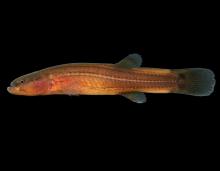
Species Types
Scientific Name
Forbesichthys agassizi
Description
The spring cavefish is the only cavefish in our state that has eyes, however small, and whose body is yellowish brown or brown; our other cavefishes lack eyes entirely and are pale and nearly colorless.
Media
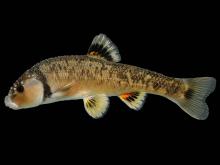
Species Types
Scientific Name
Campostoma anomalum (syn. C. pullum)
Description
The central stoneroller is a brownish minnow with small eyes. The lower jaw has a flat, shelflike extension used to scrape algae from rocks. Found statewide, it is most active during the daytime.
Media
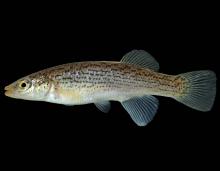
Species Types
Scientific Name
Fundulus catenatus
Description
The northern studfish is common and widely distributed in every principal Ozark stream system except the Neosho. Males in spawning coloration are some of our prettiest topminnows.
Media
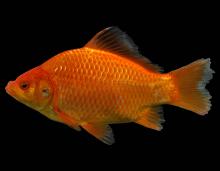
Species Types
Scientific Name
Carassius auratus
Description
Goldfish are not native to North America. They often escape into the wild from bait buckets and other causes, but there are few self-sustaining populations in Missouri.
Media

Species Types
Scientific Name
Ctenopharyngodon idella
Description
Grass carp are large-bodied with a broad head and a terminal transverse mouth. The scales appear crosshatched. A native of east Asia, it is now widely distributed in the Missouri, Mississippi, and St. Francis rivers and in impoundments.
Media

Species Types
Scientific Name
Mylopharyngodon piceus
Description
The black carp is a large, invasive carp from Asia. It eats mussels and snails and can damage populations of native mollusks. It is illegal to transport live black carp across state lines.
Media
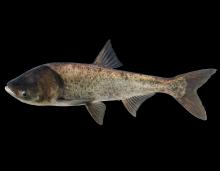
Species Types
Scientific Name
Hypophthalmichthys nobilis
Description
The bighead carp is an invasive Asian carp. It does not jump as frequently as its cousin the silver carp, but it also leaps from the water when disturbed, threatening boaters' safety.
Media
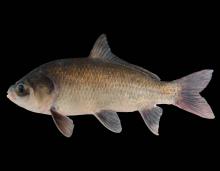
Species Types
Scientific Name
Ictiobus cyprinellus
Description
Missouri's largest sucker, the bigmouth buffalo occurs over much of the state and is most abundant in the Missouri River and its larger tributaries to the north.
See Also


Media

Species Types
Scientific Name
Amphiuma tridactylum
Description
The three-toed amphiuma is an eel-like, completely aquatic salamander. It has very small forelimbs and hind limbs, each with three tiny toes. In Missouri it’s found only in the Bootheel region.
Media

Species Types
Scientific Name
Siren intermedia nettingi
Description
The western lesser siren is an eel-like, aquatic salamander with external gills, small eyes, small forelimbs with four toes, and no hind limbs. In Missouri, it’s found mostly in the Bootheel and northward in counties near the Mississippi River.
About Fishes in Missouri
Missouri has more than 200 kinds of fish, more than are found in most neighboring states. Fishes live in water, breathe with gills, and have fins instead of legs. Most are covered with scales. Most fish in Missouri “look” like fish and could never be confused with anything else. True, lampreys and eels have snakelike bodies — but they also have fins and smooth, slimy skin, which snakes do not.





















